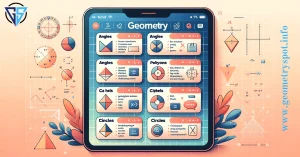What Is SAS SSS AAS and ASA? Explained Simply

Geometry can sometimes feel like deciphering a secret code with all its theorems and postulates. But fear not! In this article, we will demystify four essential concepts in geometry: SAS, SSS, AAS, and ASA. These acronyms may sound like alphabet soup, but they’re crucial to understanding the congruence of triangles. So, let’s dive right in and make geometry a piece of cake.
What Is SAS, SSS, AAS, and ASA?

SAS (Side-Angle-Side)
Let’s start with SAS. It stands for Side-Angle-Side, and it’s one of the ways to prove that two triangles are congruent. But what does that mean in plain English? Well, imagine you have two triangles, and you know that one side of the first triangle is equal in length to a side of the second triangle. Additionally, you know that the angles between these sides are equal. If you have these conditions met, congratulations! You’ve just proven that the two triangles are congruent using SAS.
SSS (Side-Side-Side)
Now, let’s move on to SSS, which stands for Side-Side-Side. This method is straightforward. If you have three sides of one triangle equal in length to the corresponding sides of another triangle, then those two triangles are congruent. It’s like matching three pairs of shoes perfectly. If they all fit, you’re good to go!
AAS (Angle-Angle-Side)
AAS, or Angle-Angle-Side, is another way to establish triangle congruence. With AAS, if you have two angles in one triangle equal to two grades in another, and one side between those angles is similar, the two triangles are congruent. Think of it as having two puzzle pieces that fit perfectly, with a connector piece in between that’s AAS for you!
ASA (Angle-Side-Angle)
Lastly, we have ASA, which stands for Angle-Side-Angle. If you have two angles and the side between them in one triangle is equal to two angles and the side between them in another, those triangles are congruent. It’s like having two identical slices of pizza, with each piece having an equally delicious crust!
Frequently Asked Questions (FAQs)
Can you give a real-life example of SAS congruence?
Absolutely! Imagine two street signs, both with a rectangular shape. If you know that one side of the first sign is the same length as one side of the second sign, and the angles at the top left corner of both movements are identical, then you’ve got SAS congruence!
What’s the importance of triangle congruence in real-world applications?
Triangle congruence is crucial in fields like architecture and engineering. When constructing structures, ensuring that particular triangles within the framework are congruent helps maintain stability and accuracy in measurements.
Is there a shortcut to remember these congruence criteria?
Yes, there’s a handy mnemonic to remember them: “Superman Always Avoids Accidents.” Each word corresponds to one of the congruence criteria – SAS, SSS, AAS, and ASA, respectively.
Can you use more everyday examples to explain AAS and ASA?
Of course! Imagine you have two flags with unique designs. If the angles at the top and bottom of the first flag match the slopes at the top and bottom of the second flag, and the sides connecting those angles are the same length, you have AAS congruence. As for ASA, picture two identical pictures in different frames. If the curves at the top left corner and bottom left corner of the first picture match the curves of the second picture, and the side connecting those angles is the same, you’ve got ASA congruence.
How can I apply these concepts to geometry problems?
To apply these congruence criteria, start by identifying the information in the problem. Then, check if it matches one of the four criteria: SAS, SSS, AAS, or ASA. If it does, you can confidently conclude that the triangles are congruent.
Are there any additional congruence criteria in geometry?
These four criteria (SAS, SSS, AAS, and ASA) are the most commonly used for triangle congruence. While there are other criteria, these cover most cases you’ll encounter in geometry.
Conclusion
In summary, SAS, SSS, AAS, and ASA are essential concepts in geometry that help us determine when two triangles are congruent. By understanding these criteria and applying them to real-world scenarios, you can unlock the secrets of triangle congruence. Remember, geometry doesn’t have to be intimidating. It’s all about finding the perfect match! So, go ahead and use these tools to tackle geometry problems with confidence.





